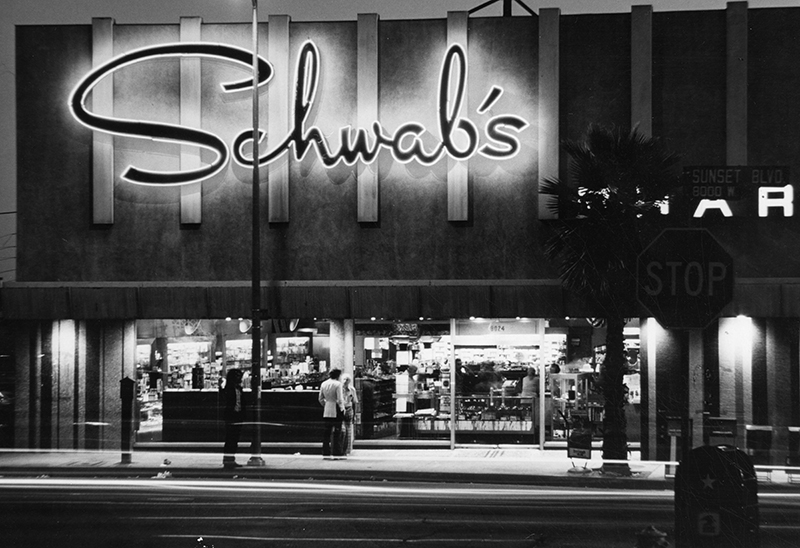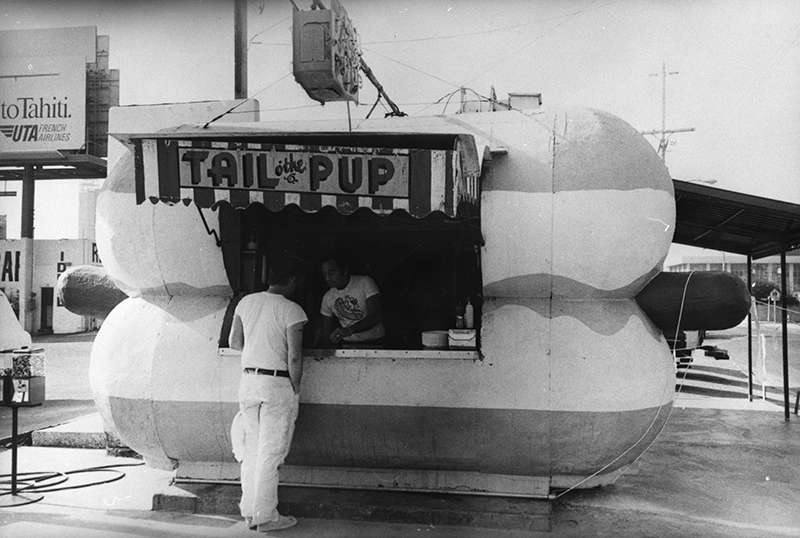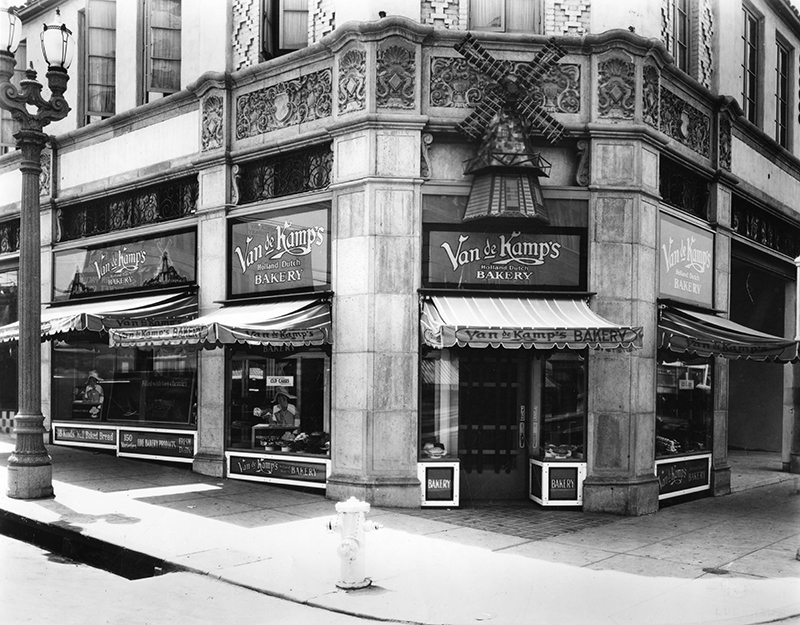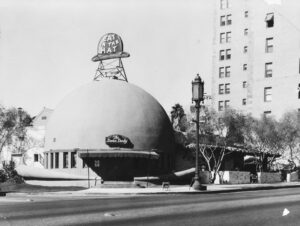
L.A.’s Legendary and Landmark Restaurants, 1897-1946: Exhibition Opening”
Thursday, September 26, 2024
6 p.m. – 8 p.m.
Central Library
History/Genealogy Dept. – LL4
Reservations not required.

The restaurant scene in Los Angeles has been a dynamic and evolving tapestry, reflecting the city’s rapid growth and the diverse cultural influences that shaped its development. During its early days, Los Angeles transformed from a modest frontier town into a sprawling metropolis, and its culinary landscape evolved in parallel, influenced by waves of immigrants, the rise of Hollywood, and significant social changes.
Using the images from the Los Angeles Public Library’s historic photo collection, author and chef George Geary has curated an exhibition that celebrates the many iconic restaurants that have closed and those still open for Angelenos to enjoy.
Early 20th Century: Foundations and Ethnic Diversity
In the early 1900s, Los Angeles was a burgeoning city with a rapidly growing population due to an influx of migrants. The city’s food scene began to reflect this diversity. Mexican cuisine, a staple since California was part of Mexico, flourished. Establishments on Olvera Street revitalized in the 1930s, became cultural and culinary hubs where traditional Mexican dishes like tamales and enchiladas were celebrated.
Established in the late 19th century, the Chinese community contributed significantly to the city’s culinary landscape. Although relocated in the 1930s due to Union Station’s construction, Chinatown remained a vital area for Chinese cuisine, offering dishes ranging from dim sum to more regional specialties.

1920s: The Rise of Iconic Eateries
The 1920s marked a period of prosperity and growth for Los Angeles, mirrored by the rise of iconic restaurants that would become landmarks. Musso & Frank Grill, opening in 1919, quickly became a staple on Hollywood Boulevard, attracting the film industry’s elite with its European-influenced menu and old-world charm. It was a place where deals were made and stars were spotted, intertwining dining with the glamour of Hollywood.
Established in 1908, Philippe the Original became famous for its French dip sandwiches, a culinary innovation that would become a Los Angeles staple. Its casual, welcoming environment and affordable prices made it popular among a broad demographic, from working-class citizens to tourists seeking a taste of LA history.

1930s: Innovation Amidst Hardship
The Great Depression of the 1930s brought economic challenges and fostered innovation in the food industry. Clifton’s Cafeteria, founded in 1931, embodied this spirit by offering affordable meals in a fantastical setting. Clifton’s “pay what you wish” policy allowed those struggling financially to dine with dignity, while its elaborate decor provided an escape from daily hardships.
The Brown Derby, established in 1926, epitomized Hollywood’s glamour during this era. Known for its famous Cobb salad, the restaurant became a gathering place for the film industry’s elite. Its unique hat-shaped building became an iconic part of Los Angeles’s landscape, symbolizing the city’s close ties between dining and entertainment.
1940s: Wartime and Post-War Changes
The 1940s brought significant changes due to World War II. The war effort led to rationing and shortages, impacting restaurant menus and operations. However, the post-war period saw a resurgence in the food industry, with a growing middle class eager to dine out and explore new culinary experiences.
Ciro’s, opened in 1940, became the epitome of the glamorous nightclub scene on the Sunset Strip. It attracted Hollywood’s elite with its fine dining and live entertainment, reflecting the city’s burgeoning nightlife and entertainment culture. The servicemen from nearby Long Beach came for the dining and dancing nightclubs that sprung up around Hollywood.
Using the images from the Los Angeles Public Library’s historic photo collection, we can celebrate the many iconic restaurants that have closed and those still open for Angelenos to enjoy.
George Geary – Author/TV Personality Chef
Sponsored by Photo Friends. Presented by the Los Angeles Public Library Photo Collection.
